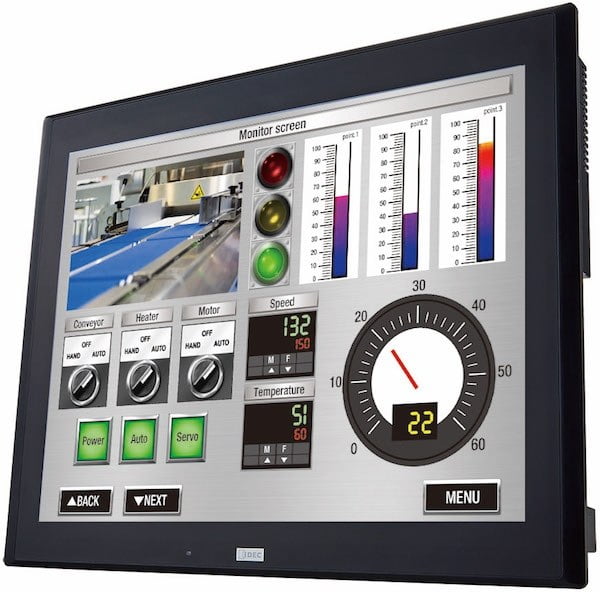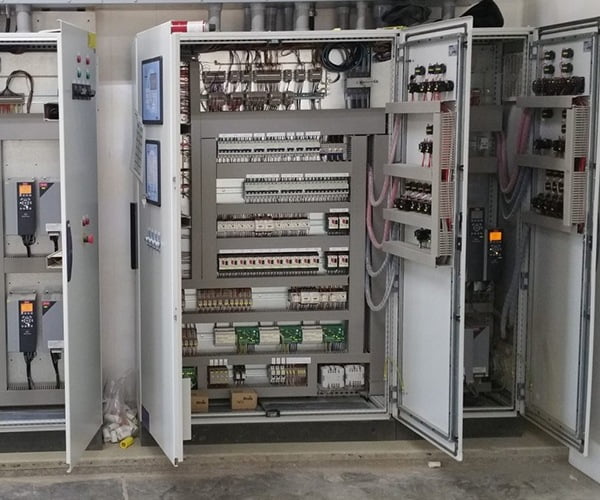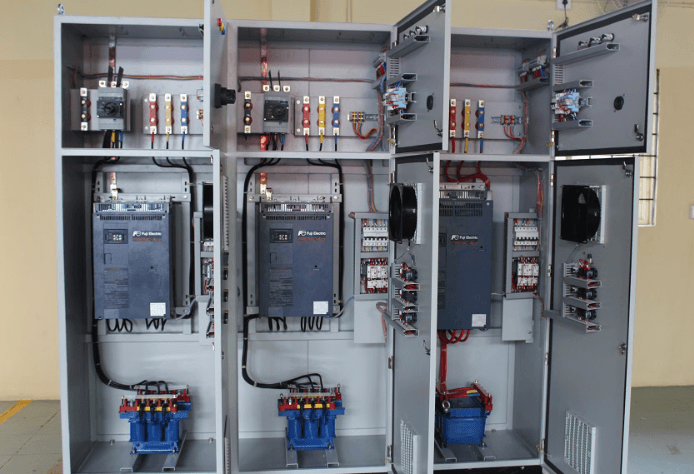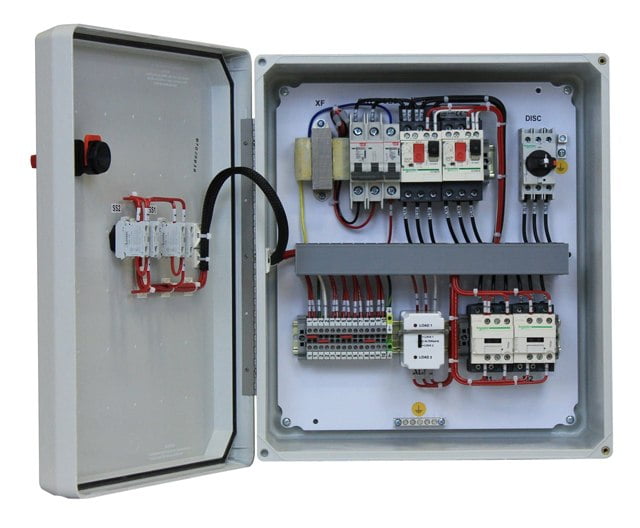
HMI control panel is a vital component in modern industrial settings, serves as the Human Machine Interface. It efficiently connects the operator to machinery, enabling seamless and intuitive control. This interface acts as the bridge between the operator and the machinery, allowing for efficient and intuitive control. Automation Panel integrate advanced HMI interfaces for seamless interaction with industrial processes, optimizing efficiency, monitoring, and control with precision.
A common HMI control panel is the touch panel HMI, which uses touch-sensitive screens for easier interaction. With the touch panel HMI, operators can easily use the screen to navigate menus, change settings, and monitor performance. This technology has transformed the way industries operate, simplifying the control process and enhancing productivity in various sectors.
The design of HMI touch panel is crucial in ensuring optimal functionality and user experience. Engineers and designers put careful thought into the layout, usability, and aesthetics of these panels. Compact and sleek designs make effective use of space, allowing for easy installation even in tight environments.
HMI Touch Panels can recognize gestures and have multi-touch, making it easier for people to use HMI software. This intuitive design approach ensures that operators can quickly and accurately access the necessary controls, reducing the likelihood of errors and improving overall efficiency. With touch panel HMI, industries can streamline their operations, leading to increased productivity and reduced downtime.
Explore high quality HMI control panels – the pathway to seamless industrial operations. Siemens HMI touch panels offer intuitive operation, enhancing efficiency effortlessly. Elevate productivity with advanced HMI operator panels. Industrial automation panel redefine workspaces, ensuring precision and simplicity in your operations.
What are the Different Types of HMI Control panel?
Different types of HMI Panels serve distinct functions in industrial settings. Push-button HMIs facilitate manual control, empowering operators to initiate specific actions or sequences. With our expertise in control panel design, we ensure seamless integration and efficient operation. Overseer HMIs provide real-time monitoring, enabling supervisors to oversee processes remotely. Proficient in PLC programming, we guarantee data accuracy and system reliability. Data handling HMIs focus on data visualization and analysis, aiding decision-making processes. Leveraging our expertise in data management, we design intuitive interfaces for accessing and interpreting data. Each HMI type plays a crucial role in optimizing industrial processes, enhancing efficiency, and ensuring safety.
We integrate HMI screens from renowned brands into complete automation panels, offering comprehensive automation solutions. Our portfolio includes leading brands such as Siemens HMI, Rockwell Automation, Schneider Electric, and Wonderware. Each HMI screen is carefully selected for quality, reliability, and seamless integration, ensuring optimal performance for industrial applications
Components of HMI Control Panel
HMI Control Panel consist of several key components, each part has it own important role in ensuring smoother operations. Control Buttons and Switches, strategically placed, offer tactile inputs for quick and precise command execution. Communication Ports facilitate seamless connection, enabling the HMI to exchange vital data with other devices in the network.
The Processor and Memory work in tandem, processing commands swiftly and storing crucial information for optimal functionality.
Integration of PLC control panel with HMI improves the efficacy of automation in industrial processes. The HMI software solutions provides data display and control, fostering a user-friendly interface. PLC and HMI integration facilitates real-time communication, ensuring a synchronized workflow.
HMI control panels integrate seamlessly with SCADA systems, offering a comprehensive solution for industrial automation. HMI panels provide intuitive user interfaces for local control, while SCADA systems gather data from various sensors and devices, enabling centralized monitoring and control. Together, they enhance efficiency, productivity, and decision-making in industrial operations.
Touch Panel HMI Design
In the design of touch panel HMI in industrial settings, there are several key considerations to keep in mind. Choose a tough and durable industrial panel PC that can handle tough conditions in industrial settings. Manufacturers specifically design industrial touchscreen panel to resist dust, moisture, and extreme temperatures. This ensures reliable performance even in challenging circumstances.
Designing a touch panel HMI for industrial use requires careful attention to user experience. It also requires careful attention to interface design. In addition, it must be durable.
The touch panel should be intuitive and user-friendly. Operators should be able to easily navigate through the system and access necessary information or controls.
Clear and responsive touchscreens are crucial in industrial settings. Well-organized, visually appealing interfaces ensure efficient, error-free operation. industrial control panel design factors, touch panel HMIs can enhance productivity and streamline operations in various industrial applications.
- Select a rugged and durable industrial panel PC that can withstand harsh conditions in industrial environments
- Industrial panel computers are resistant to dust, moisture, and extreme temperatures for reliable performance
- Design touch panel HMIs with user experience and interface design in mind
- Ensure the touch panel is intuitive and user-friendly for easy navigation
- Provide clear and responsive touchscreens for efficient operation
- Organize interfaces well to access necessary information or controls easily
- Create visually appealing interfaces to enhance productivity
Importance of Touch Panel HMI in Industrial Settings
Touch panel HMI, or human-machine interface, has changed the industry with its easy-to-use design and advanced features. Best HMI control panel, it’s important to have good control over processes.
The touchscreen control panel has a user-friendly touch screen. It helps operators monitor and control systems. This improves productivity and reduces mistakes.
One of the key aspects of touch panel HMI in industrial settings is its design. The engineers have designed the HMI control panel to help operators easily navigate screens and access important information.
The layout thoughtfully organizes, allowing for quick decision-making and minimizing the risk of human errors. The touch panel control system has a great touch screen for effective and efficient operator interaction with the system.
The touch panel HMI is easy to use, helping operators learn quickly and improving efficiency while reducing downtime.
How to install an HMI control panel
Installing an HMI control panel is a straightforward process. Begin by mounting the panel securely. Connect it to the power supply and ensure proper wiring. Attach any additional components, such as switches or communication ports.
Ensure optimal performance by calibrating the touch panel display systems. This quick step ensures accurate and responsive interactions, enhancing the user experience.
Power up the system, and follow the instructions manual to install the necessary software. Test the panel to ensure all functions work correctly. Lastly, secure the panel in its designated location for optimal performance.
Innovative Design Features
The field of industrial automation and custom HMI solutions is rapidly advancing. Implementing innovative design features in touch panel HMI systems has become paramount. One such feature is the integration of an industrial touch screen PC. It offers many benefits for operators and technicians.
The industrial touch screen PC has a robust build quality and a responsive interface. It allows for seamless interaction with the HMI control panel, enhancing productivity and ease of use. Furthermore, its durability ensures reliable performance in harsh industrial environments. This makes it an essential component in modern HMI design.
The touch panel HMI has high-resolution displays and intuitive graphical interfaces. It provides real-time data output. This allows operators to make informed decisions and respond promptly to any issues or anomalies.
This seamless integration of data creates a user-friendly experience. It ensures efficient operation and increased productivity in industrial settings.


